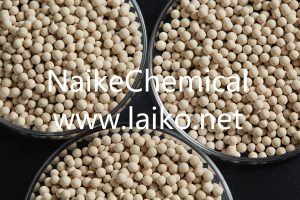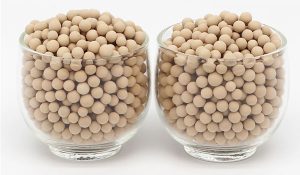Mist Eliminator For Wet Scrubber
What are Mist Eliminators?
The mist eliminator is mainly composed of fixed devices such as corrugated blades, plates, clips, etc. During the operation of the absorption tower in wet desulfurization, , it is easy to generate “mist” with a particle size of 10–60 microns ” which not only includes water, but also dissolves sulfuric acid, sulfate, sulfur dioxide, etc. The“mist” will cause contamination and severe corrosion of fans, heat exchangers and flues. Therefore, the purified gas should be demisted before leaving the absorption tower. The mist eliminator is an important part of the desulfurization tower. The function of the mist eliminator is to capture the mist particles and slurry droplets entrained by the flue gas during the spray absorption process. The efficiency of a mist eliminator is not only related to its structure but also to the weight and particle size of the mist particles. To obtain a good demisting effect, the performance of the mist eliminator and the diameter of the mist particles should be well matched.
Types of Mist Eliminators
There are two main types of mist eliminators: wire mesh mist eliminators and vane mist eliminators. Its materials can be metal, plastic and fiberglass. The most popular materials are stainless steel and high-performance PP.

1. Mesh Pad Mist Eliminator
Mesh pad mist eliminator is the most common type of mist eliminator. It is also called , wire mesh demister and wire mesh mist eliminator. It has low installation costs and provides high separation efficiency. Generally, metal wire or engineering plastics (PP, PTFE, FEP, PVDF, etc.) are woven by a special warp and weft method to mesh, and then the woven wire mesh is pressed into a certain angle of corrugation. The embossed corrugated wire mesh is made into various specifications and sizes. They provide great performance in a variety of conditions, and you can set them up in vertical or horizontal airflow arrangements. Its mechanism of action is: when the tiny liquid droplets entrained in the gas stream are adhered to or adsorbed when they pass through the wire mesh. The very small droplets agglomerate and coalesce into large droplets. Under the action of gravity, the droplets move down along the intersection of the woven wire mesh, and at the same time, the mesh continues to absorb the droplets. Finally, the large mist droplets flow to the bottom of the demister screen and fall down by the droplet’s own gravity. The adsorption capacity of a single wire is improved so that during normal operation, the demisting rate of the demisting wire mesh is improved when the droplets increase, therefore the extremely small mist droplets can be effectively adsorbed and removed. This wire mesh demister has the characteristics of small pressure drop, large specific surface area and high defogging efficiency.
2. Vane Mist Eliminators
Vane-type mist eliminators also known as vane separators, herringbone or baffle demisters, are collision demisters like wire mesh demisters. The demist element of the vane demister is composed of a plurality of equidistantly fixed corrugated plate vanes stacked. A curved flow channel is formed between two adjacent corrugated plates, and the cross-section of the flow channel is constantly changing. When the aerosol flow carrying droplets passes through the flow channel, the droplets are captured under the action of collision, centrifugation and swirl.
When the compressor carries liquid, the droplets will corrode the compressor, form grooves, generate salt accumulation, and dilute the lubricating oil, which will shorten the life of the compressor. The vane-type mist demister can solve the liquid problem, avoid blockage, handle high-viscosity liquid, reduce foam generation, and maintain the stability of the production process.

Applications of Mist Eliminator Filter
Mist eliminators are widely used in industrial and chemical fields and have high liquid/droplet separation efficiency and low-pressure drop. Applications for mist eliminators include desulfurizers, scrubbers, separators, knockout drums, natural gas purification, flue gas purification, distillation, purification and GDU columns, exhaust systems for bioreactor vessels, evaporation processes, vapour drying and process vessels. Naike Chemical offers a variety of vane mist eliminator design variants, each of which can be adjusted to your specific needs, including differences in blade spacing, a number of bends, bending angle, catch hook and drain hook. In addition to various designs, Naike Chemical also offers mist eliminators made of different materials. The most common is metal or plastic. Our experts will recommend the most suitable material for your application.



